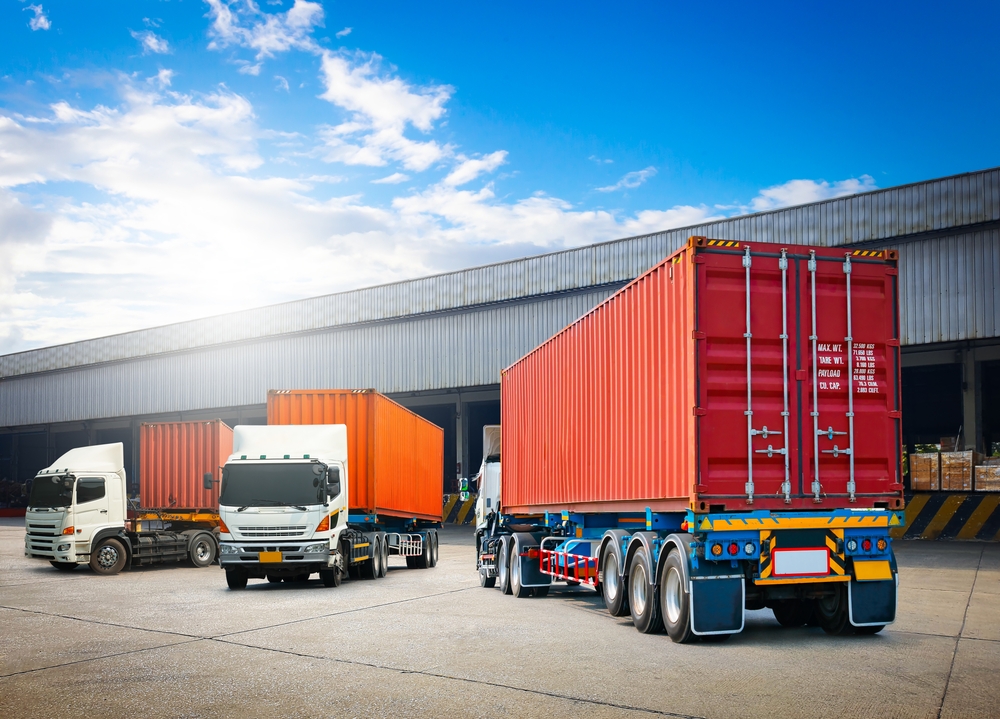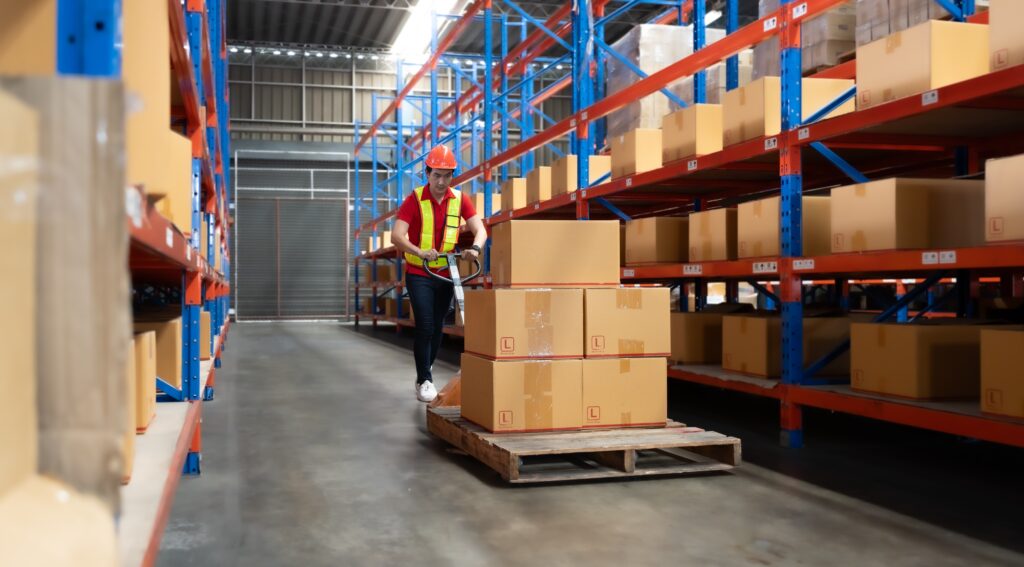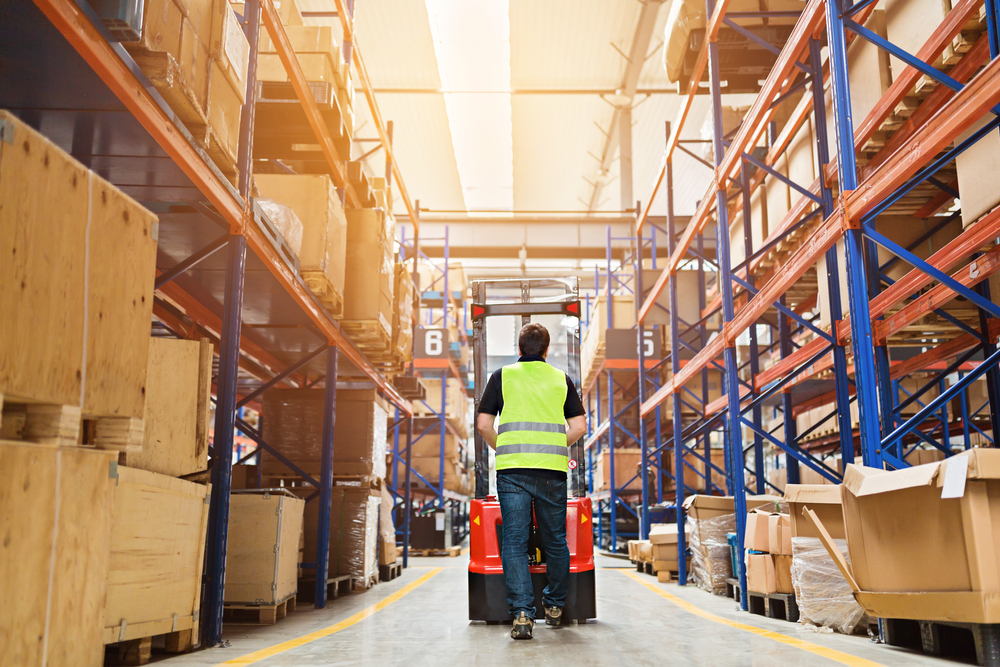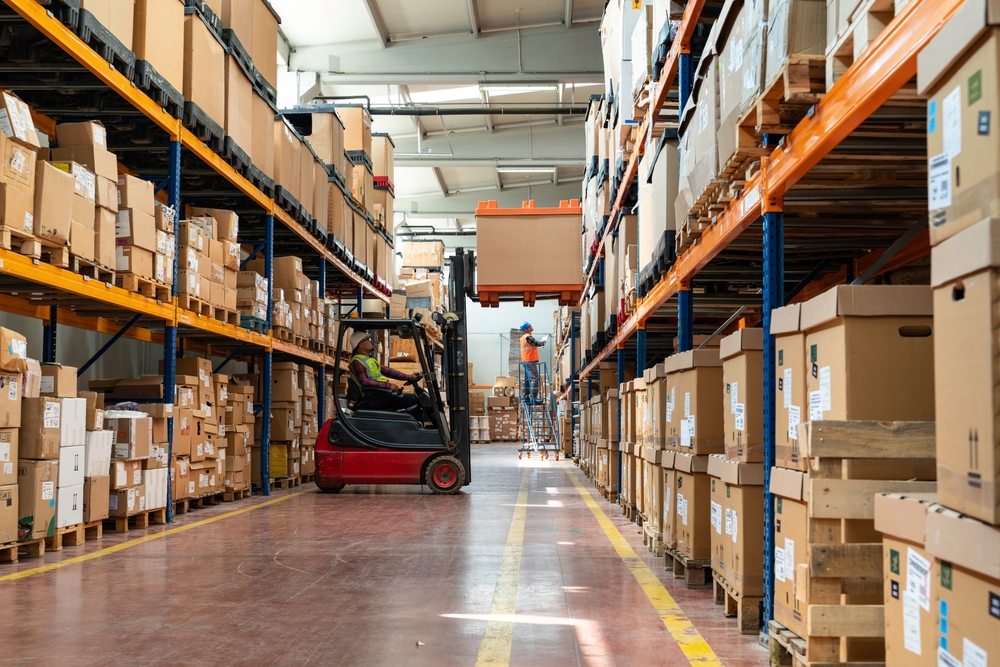Warehouses and industrial zones are some of the busiest places to work, making them two of the industries that need road paint the most.. Trucks line up at loading docks, forklifts weave through aisles carrying heavy loads, and employees move between work areas and offices. With so much activity happening at once, it doesn’t take much for things to become disorganized. When that happens, the risk of accidents rises quickly.
Industrial line marking is one of the most effective ways to bring order, improve safety, and maximize efficiency. More than paint on the ground, it functions as a visual communication system that guides every movement inside and outside industrial facilities.
For contractors, facility managers, and government stakeholders, understanding the benefits of warehouse line marking is key to ensuring smooth operations in high-traffic environments.
Outdoor Roadway Line Markings: Benefits Beyond the Warehouse
The areas outside warehouses and industrial sites are always busy. Trucks, vans, and even employee cars often cross paths with people on foot, each heading in different directions. Clear outdoor line painting for warehouses brings order to this mix, turning what could be a crowded, confusing space into one that’s safe and easy to navigate.

Traffic Flow Management
Outdoor spaces around warehouses can quickly become chaotic without proper traffic organization. Trucks may line up haphazardly, employee vehicles might block service roads, and delivery vans could obstruct loading zones.
Roadway markings address these problems by providing a structured flow of movement. Painted lanes guide trucks to appropriate entrances and exits, arrows indicate one-way traffic, and designated holding bays prevent vehicles from clogging up main driveways.
By keeping vehicles moving in an orderly way, facilities avoid wasted minutes and cut back on fuel burned from trucks sitting still or circling around. In large logistics hubs that handle dozens of arrivals each day, that steady flow makes a big difference in keeping the supply chain on schedule. Contractors and facility managers benefit as well, since clear warehouse line markings reduce the need for additional personnel to direct traffic manually.
Safety at Entry and Exit Points
Accidents frequently occur near entrances and exits because these areas combine multiple traffic types: incoming trucks, employee vehicles, and pedestrians heading to offices or parking lots. Properly designed markings create predictable movement patterns that significantly reduce the risk of collisions.
Zebra crossings and pedestrian walkways provide visible cues that remind drivers to slow down and yield. At the same time, stop lines and directional arrows help trucks enter and exit in an orderly fashion. For facilities where visitors and contractors may not be familiar with the site layout, these industrial line markings serve as a universal guide, ensuring they navigate safely without confusion.
Safety at access points also improves operational confidence, since employees and drivers know that risks are minimized. Clear entry and exit markings help keep people, vehicles, and cargo safe.
Loading Dock Efficiency
Without clear guidance, loading docks can slow everything down. Trucks that miss their mark often need several tries to get into position, wasting both time and fuel. In worse cases, poor alignment leads to accidents that damage the dock, the vehicle, or the cargo.
Clear dock markings make it easier for drivers to line up their trucks on the first try, speeding up loading and unloading while lowering the chance of mishaps. For sites handling perishable goods or time-sensitive shipments, that kind of efficiency isn’t just helpful, it’s essential.
Line markings also help warehouse staff anticipate vehicle movements, allowing them to prepare loading bays in advance and coordinate schedules more effectively. By improving docking precision, outdoor line markings not only save time but also extend the lifespan of equipment, since fewer accidents mean less wear and tear on docks and forklifts.

Compliance With Local Traffic Codes
Industrial sites are not exempt from local traffic laws. Fire lanes must remain clear, speed limits must be posted, and pedestrian safety zones must be visible. Outdoor markings make it easier for facilities to stay compliant with these requirements.
Fire departments often mandate that access routes be clearly marked, ensuring emergency vehicles can reach the site without obstruction. Similarly, markings for no-parking zones, directional lanes, and speed indicators ensure the facility aligns with regulations.
Non-compliance can result in fines, shutdowns, or liability in case of accidents. Beyond avoiding penalties, compliance builds trust with regulators and stakeholders, signaling that the facility prioritizes safety and responsibility. Contractors and facility managers who invest in compliant markings also reduce administrative burdens, since inspections are more likely to pass without issues.
Better Visitor Management
Industrial zones often welcome delivery drivers, contractors, inspectors, and other visitors who may be unfamiliar with the site. Without warehouse line markings, these individuals can easily get lost, park in the wrong place, or inadvertently enter restricted areas.
Outdoor line markings simplify navigation, directing visitors to designated parking areas and keeping them away from heavy truck lanes. When clients or government officials visit a site, clear and well-kept markings help create a strong first impression of professionalism and order.
Beyond safety, effective visitor management reduces operational disruptions. Employees no longer need to redirect confused visitors or clear blocked driveways, allowing them to focus on their core tasks. This combination of safety, efficiency, and professionalism underscores the value of investing in comprehensive outdoor markings.
Indoor Floor Line Markings: Benefits on the Warehouse Floor
Warehouses operate in a constant state of movement. Forklifts transport heavy loads, trolleys pass through aisles, and employees move steadily between work areas. Without clear direction, that kind of activity can quickly become dangerous. Indoor warehouse line paintings give structure to the floor, helping people and machines move safely side by side.
Forklift Lane Safety
Forklifts are essential for handling heavy loads, but they also pose some of the highest safety risks in a warehouse. When lanes aren’t clearly marked, forklifts can drift into walkways or storage areas, raising the chances of an accident.
Warehouse line markings eliminate this uncertainty by assigning dedicated travel lanes for forklifts. These lanes can include directional arrows to control traffic flow, turning radii to prevent collisions at corners, and even color coding to differentiate between fast-moving and slow-moving traffic.
For warehouse supervisors, this translates into fewer near-misses, fewer accidents, and a safer working environment overall. Workers on foot also benefit, since they can anticipate forklift movement and avoid high-risk areas. Over time, organized forklift traffic reduces damage to products, shelving, and equipment, ultimately saving money on repairs and replacements.

Protected Pedestrian Walkways
Pedestrian safety is one of the most critical concerns in industrial environments. Workers, inspectors, and even visitors often move through the same areas as heavy equipment. Without marked walkways, people can end up taking unpredictable paths, sometimes straight into forklift lanes or loading zones.
Marked pedestrian paths, often highlighted in bright colors like green or white, create safe corridors that guide foot traffic efficiently and keep people out of harm’s way. These walkways can also be enhanced with zebra-style crossings at intersections with forklift lanes, giving pedestrians priority.
The psychological benefit is equally important: workers feel safer and more confident moving through the warehouse when they know they have dedicated routes. In busy facilities with high staff turnover, walkways help new employees quickly adapt to the floor layout, reducing training time and ensuring safety protocols are followed consistently.
Efficient Loading and Storage Areas
A disorganized warehouse often struggles with blocked aisles, misplaced pallets, or goods stacked in unsafe locations. Industrial line markings prevent these issues by clearly defining where storage ends and traffic space begins.
Outlined storage zones ensure products are kept neatly within boundaries, while loading areas are clearly marked to accommodate incoming and outgoing goods. This organization reduces the risk of overstocking and prevents pallets from blocking emergency exits or walkways.
For managers, defined storage zones improve inventory control and make it easier to locate goods, reducing wasted time. Forklift operators also benefit, since they can quickly identify staging areas without confusion.
In fast-moving warehouses, where efficiency is tied directly to profitability, these markings keep workflows streamlined and predictable. Over the long term, well-marked zones also help maximize usable floor space, ensuring no square meter goes to waste.
Emergency Readiness
In an emergency, every second counts. Whether it’s a fire, a chemical spill, or a medical situation, workers must be able to locate exits, first-aid stations, and firefighting equipment immediately. Bright and durable line markings provide clear visual cues that direct employees to safety.
Exit paths can be painted in luminous or reflective colors, ensuring visibility even in low light or smoke-filled conditions. Red zones can highlight fire extinguishers and hydrants, while green markings indicate the fastest route to emergency doors.
By reducing confusion during critical moments, these markings can save lives and minimize damage. For regulators, visible and well-maintained emergency markings are often a requirement, meaning they also help facilities remain compliant with safety standards. For workers, they provide peace of mind, reinforcing the idea that their safety is taken seriously by management.

Organized Workflow
Beyond safety, warehouse line markings significantly improve the day-to-day efficiency of operations. By dividing the floor into zones for loading, staging, storage, and pedestrian use, markings create a predictable workflow that employees can easily follow. This reduces unnecessary movement, lowers the risk of misplaced goods, and ensures workers always know where to perform specific tasks.
For example, staging areas for outbound goods can be separated from inbound deliveries, preventing confusion and delays. Warehouse line paintings can also be adapted over time as operations grow, allowing facilities to scale without losing efficiency.
Workers benefit from the clarity of a well-structured layout, while managers gain tighter control over how space is used. In competitive industries where every second of productivity counts, an organized workflow supported by line markings can provide a real advantage.
Rua Seguridad: Supporting Safer Industrial Operations
Industrial facilities face unique challenges, and there is no one-size-fits-all solution. A distribution center handling hundreds of trucks each day has very different needs compared to a warehouse primarily used for storage.
Rua Seguridad works with contractors, facility managers, and government agencies to design marking layouts that reflect real traffic patterns, surface conditions, and regulatory requirements. With years of experience in industrial and commercial projects, our team provides solutions that are durable, reliable, and tailored to each site.
Whether outdoors in truck yards or indoors on busy warehouse floors, we deliver line marking systems that support safety, efficiency, and compliance, all while minimizing disruption to day-to-day operations.

Prioritize Safety and Efficiency in the Warehouse
Road and line marking isn’t just a finishing detail for industrial sites. It’s a vital tool that keeps busy environments organized, safeguards workers, and helps logistics run without interruption.
Outdoor roadway markings streamline vehicle traffic and loading operations. Meanwhile, indoor floor lines guide pedestrians, safeguard forklift operations, and highlight emergency routes.
The benefits are clear: improved safety, higher efficiency, and stronger compliance. Together, these advantages create a working environment where people and machines can operate confidently and productively.
For contractors, facility managers, and government stakeholders, investing in high-quality road and warehouse line markings is not just about compliance. It is a commitment to safer, smarter operations.
Rua Seguridad provides road marking paints and solutions built for demanding industrial settings. If you are ready to enhance safety and efficiency in your facility, reach out to us today and discover how the right industrial line markings can make all the difference.



